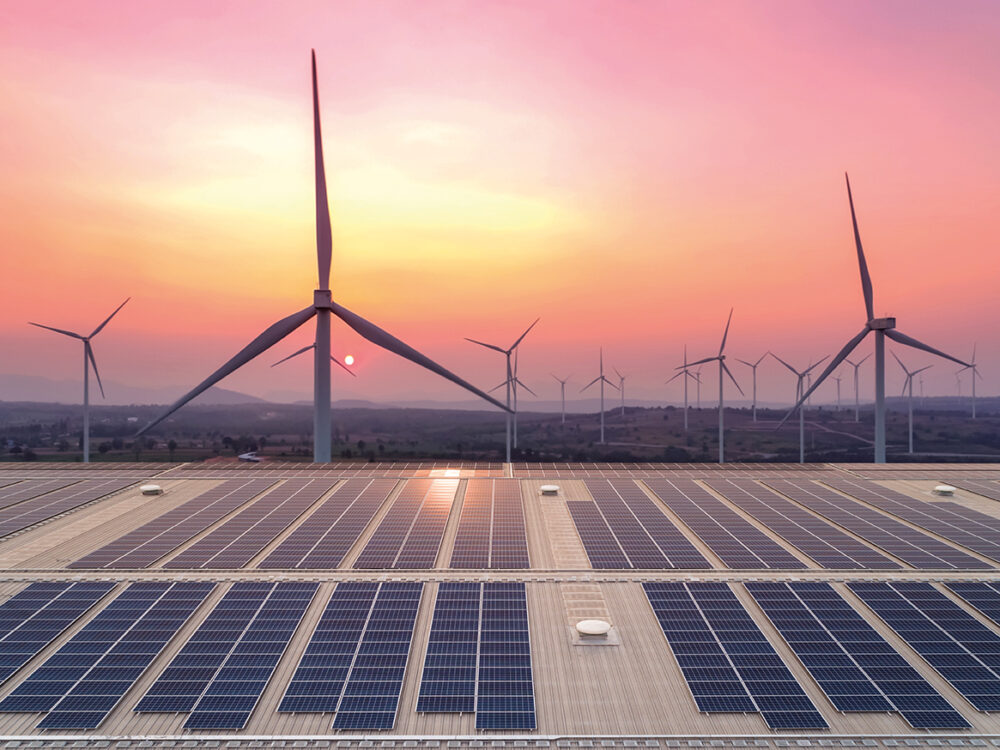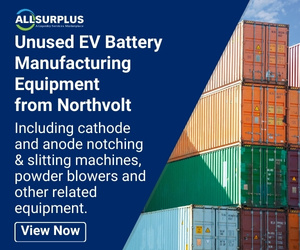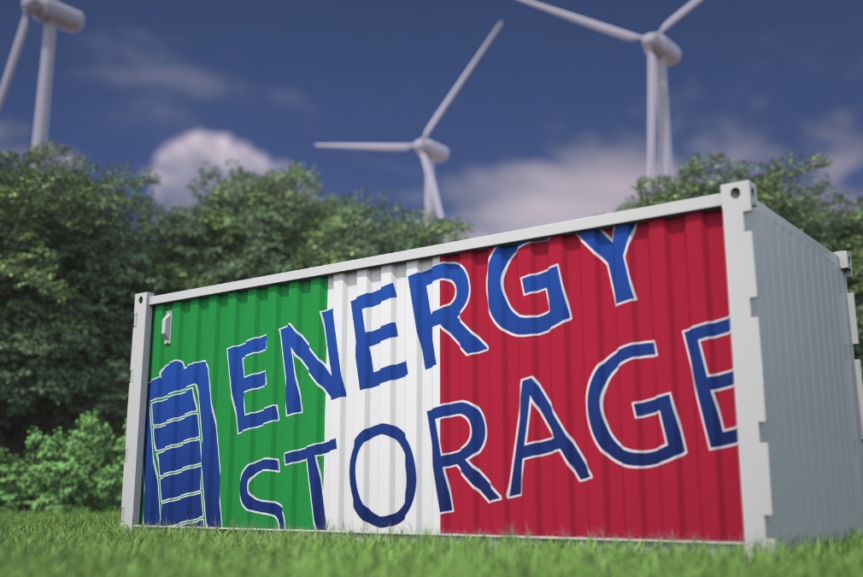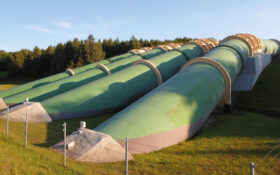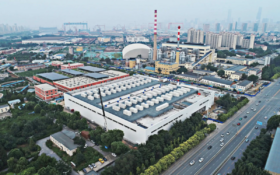
Taking advantage of the next era of energy storage— especially under the umbrella of decarbonisation— will require multiple technologies and changes to how we operate the grid. Tilo Buehler, global product manager, Grid Edge Solutions, ABB Power Grids, explains how virtual power plants and distributed energy resources can answer these challenges.
As we enter the next era of energy, there are innumerable new resources and technologies available to take advantage of. Our climate priorities are shifting to decrease emissions and dependence on fossil fuels and increase our use of renewable energy and batteries. The market is keeping pace with this demand. According to the Energy Storage Association, energy storage is expected to triple in 2021, unleashing the build-out of higher shares of renewable-generated power, while introducing more flexibility and resiliency to the grid.
Taking advantage of this means changing the way we operate our grids and rethinking how we integrate different energy sources and software. One way to do this is by implementing microgrid concepts at the local level and combining distributed energy resources (DER) into virtual power plants (VPP). DERs are a power source or power sink connected to the grid’s distribution system; its subsystem or behind a customer meter, such as a prosumer’s solar system, electric vehicle chargers, and storage resources. These DERs can be used to improve the system’s flexibility.
Microgrids, by definition, are smaller-scale self-sufficient generation and distribution systems. They allow the energy network to evolve and address new challenges and applications. VPPs are a network of DERs, such as wind and solar farms and storage systems, that are aggregated to stabilise the grid, allow for flexible energy use and address peaks in demand. Microgrids and VPPs are different in the systems they use for control and operation but many of the goals for use remain relatively the same.
Aiding VPP deployment
As we continue to work toward a more sustainable future, our grid infrastructure demands more flexibility and the ability to integrate a variety of distributed energy sources, including wind and solar. There is a strong drive to move beyond a centralised grid to a more distributed one to manage increased demands from consumers and weather issues alike.
Microgrids have been tackling these issues for remote communities for decades, and there’s a lot that VPPs can learn from these implementations. Microgrids started as mini-grids separate from the main network, requiring orchestration to integrate renewables. Now, on a broader interconnected network, we see many more DERs. This concept now needs to be applied to the main grid to extract more value from these DERs.
Microgrids are typically DERs connected on the same circuit. They can disconnect from the grid to provide local services and provide a single customer/business with some advantages. It can be applied to a broader region but, by and large, they are limited to a geographically specific area. On the flip side, VPPs are multiple DERs across a wider grid. They are coordinated to provide higher-level benefits for a broader network.
VPPs aggregate an available power capacity, either for additional generation or for load reduction, toward a large tradable capacity. For the VPP to earn money, this tradable capacity must be cheaper than alternatives on the market. To do this, the VPP must optimise procurement of spare capacity, manage associated asset revenues, and optimise market price-driven bids. This is different from a microgrid, in which the control system manages voltage and frequency locally.
The biggest crossover between microgrids and VPPs is control and orchestration. Microgrids require active control of all resources, and this is key to balanced and seamless function. This applies to VPPs, too. To work effectively, VPPs must orchestrate a number of DERs to function at a particular moment in time. This requires large-scale aggregation with market focus, real-time control, automation and orchestration.
To be clear, DERMs (distributed energy resource management systems) and VPPs are different things. VPPs are often used for aggregation of DERs and power capacity that can be used for services (commonly, frequency and demand response) that are not location-specific within a market. For DERMs, usually within one distribution system, the aggregation of DERs is a way to manage network constraints, which are location-specific. Unlike microgrids, VPPs are digitally connected by definition but can be spread out because the goal is to provide aggregated grid-level benefits.
As we move from a centralised to a distributed power model, VPPs offer new ways to aid that transition— as they enable renewable energy at scale and contribute to stabilising the power system. DERMs will also provide services to help meet loads that are otherwise hard to deliver due to network constraints.
In both cases, the incorporation of, and focus on, renewable energy means decreasing reliance on fossil fuels and lowering carbon emissions. As the world works toward net zero emissions, we will likely see more VPP implementations on grid-connected utilities. We are coming from a system with large centralised power stations, where customers used energy when they wanted, and moving toward more renewable energy and a distributed energy network, which operates under a variable supply and variable demand model.
However, when people aren’t coordinating all of those distributed resources, a “conductor” to orchestrate them becomes necessary. That’s where VPPs add value. By aggregating DERs to provide a single service, we create the opportunity to shut down centralised power stations that rely on fossil fuels to operate and provide power.
The biggest barrier to achieving this, however, is the regulatory and commercial setup. VPPs provide a lot of value, but unless they can be monetised, it’s a hard sell. That’s why this new model is starting slowly.
For example, in Australia, it’s used by businesses and residential customers that already have installed rooftop solar and batteries to provide their own local benefits. VPPs can connect all of these individual energy resources to run holistically to support the grid and return additional revenue to the DER owners.
Digitalisation of energy
Technology is key to making a VPP work. Having a solid software foundation is the best way to ensure the success of the deployment. DERs are foundational to VPPs, but communication infrastructure is the most important technology to orchestrate them.

Artificial intelligence/machine learning (AI/ML) and data analytics play a greater role in “auto bidding”— a way of forecasting how to make the most of capacity and prices in the energy market. The better the forecast, the better the decisions made. AI/ML and analytics can forecast what to bid for a greater return to DER customers and VPP vendors. These technologies can also be used to forecast peak times for generating renewable energy and calculate the output needed based on that.
The move to digitalisation in the energy industry is huge. Communications and software are elements the traditional grid hasn’t put at the forefront, and instead designed a more passive grid. In traditional set ups, network operators would build additional capacity and network, and if anything went wrong, there’s still enough capacity to keep the lights on. VPPs respond proactively to an abnormal situation but need connectivity and software to make this approach work. In this case, the skills of power workers need to evolve to manage this.
It’s possible to up-skill the current workforce to support these new digitised efforts, but it’s also important to invest in the best talent focused on these emerging areas. For example, the forecasting piece of VPPs could be the difference between one company and its competitors returning more value, and that could affect winning contracts. More data, sophisticated algorithms and people who know how to manage both will lead to a more successful business overall.
VPPs in real life
Singapore operates one of the most reliable electricity networks in the world, and this is a key milestone in a VPP project, as energy storage is critical to the efficient integration of green energy into Singapore’s power grid.
The country aims to deploy at least 2GW-peak of solar energy by 2030. This is equivalent to powering about 350,000 households for a year. To help, Singapore is developing its first VPP project. The project, launched in 2019, is developed by the Energy Research Institute at Nanyang Technological University, Singapore and is jointly funded by Singapore’s Energy Market Authority and Sembcorp Industries.
The VPP will enable electricity produced from DERs, like solar and other green sources, to be integrated intelligently, simulating a utility-scale power system. Using real-time information, the VPP will optimise the power output of these resources located across the island. Energy fluctuations resulting from solar intermittency will be balanced automatically via the VPP.
ABB Power Grids’ e-mesh PowerStore battery energy storage system is a critical part of the VPP infrastructure, providing grid stability by balancing intermittent generation with smart and dynamic loads.
Australia is also ripe for VPP opportunity, as rooftop solar is the country’s largest power generator, boasting 12GW of power across the country. Australia is starting to pick up more VPP projects to solve local problems and contribute to markets as a source of revenue. For example, an unregulated utility in the country operates its own VPP for a few large commercial customers. It aggregates energy storage systems to customers with large loads, bids into their markets, and helps customers save money by switching off processors at specific times.
A lot of markets globally have adopted DERs and a lot of jurisdictions are trying to uncover their value and understand the societal and technical benefits. Without VPPs, they’re leaving money on the table.
DERs are doing a lot for individual customers but they can still do more. In order to get closer to our clean energy targets and optimise the system, we need to optimise them through VPP implementations. Without this, we have duplication— power stations online and latent capacity sitting in the network. If we can orchestrate all of a country’s DERs to complement wind and solar resources, we can finally replace fossil fuels.

